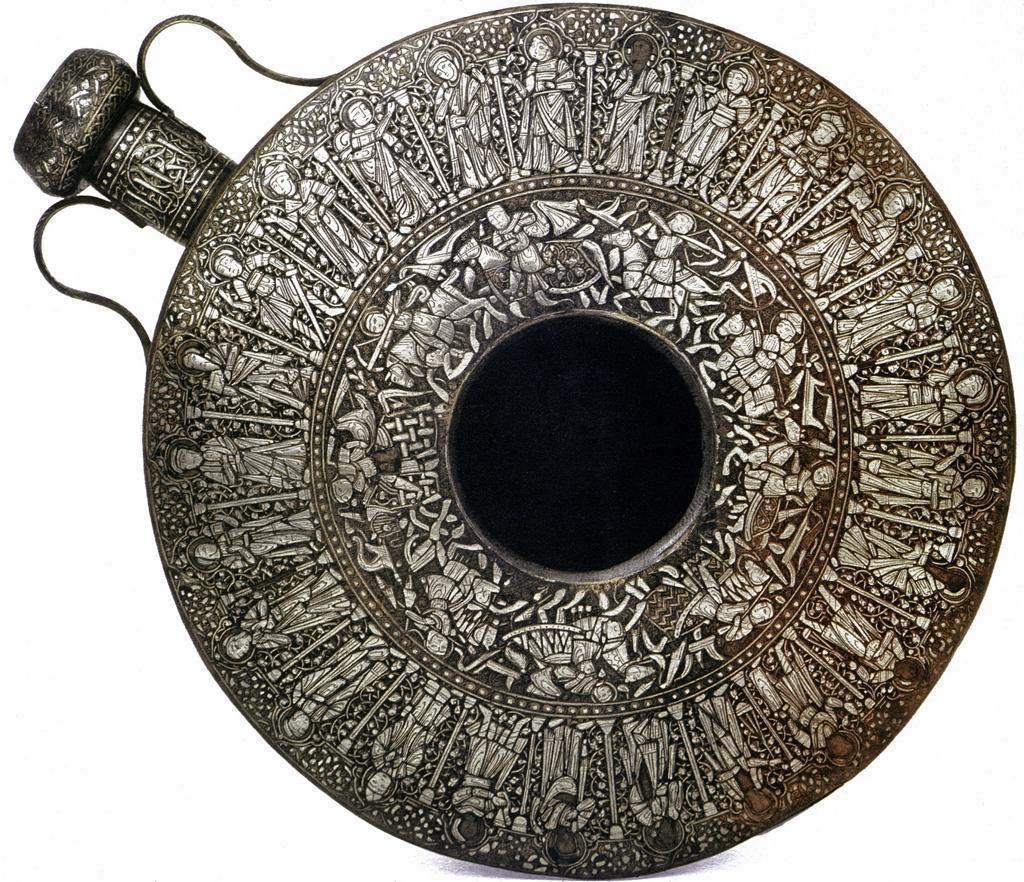The Freer Canteen, base view

A larger image of the base of the Freer Canteen
Source: Study Blue

Details of the horsemen on the Freer Canteen
Details of the warrior saints on the Freer Canteen
Referenced as figure 287 in The military technology of classical Islam by D Nicolle
287. Inlaid metal flask, early 13th century AD, Jazīrah, Freer Gallery of Art no. 41.10, Washington (Elg).
p90-91 By the 12th century the Muslim qunṭārīyah was clearly regarded as a relatively short and heavy cavalry weapon made of beech, fir or other woods, though not of bamboo. It was used by both Saracens and Franks in the Middle East.29 Its blade, ʿarāḍ was broad and acorn-shaped30 and may have been designed for both thrusting and lateral cutting strokes. Such blades were occasionally very large indeed. Here it might be worth noting that four lance blades, recovered from the 11th century Islamic shipwreck in the Aegean, were also quite large, being some thirty centimetres in length, excluding their sockets.31 These and smaller versions appear in many pictorial sources (Figs. 3, 15, 26, 130, 156, 185, 243, 267, 268, 287, 290, 292, 300, 303, 323, 336, 385, 392, 394, 429, 447, 497, 498, 504, 507, 510, 514, 418, 521, 531, 540, 542, 543, 544, 545H, 547 and 609).
29. Al Tarṣūṣī, op. cit., p. 113; Usāmah ibn Munqidh, op. cit., pp. 38-39 and 74-75; ʿImād al Dīn, op. cit., pp, 16 and 191.
30. Al Tarṣūṣī, loc. cit.
31. Bass, "A Medieval Islamic Merchant Venture," p. 92.
Referenced on p.16, MAA - 171 - Saladin and the Saracens by David Nicolle
Early 13th-century inlaid bronze bottle from the Jazirah area. It shows mounted warriors using lances and crossbows, with some horses protected by armour. (Freer Gall., Washington)